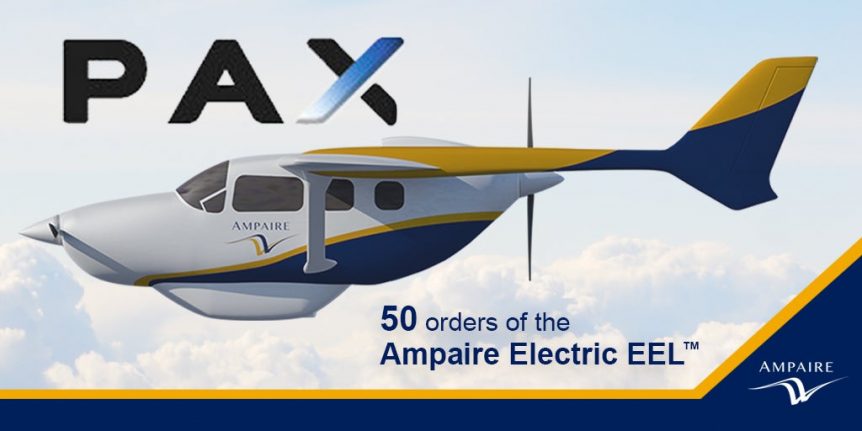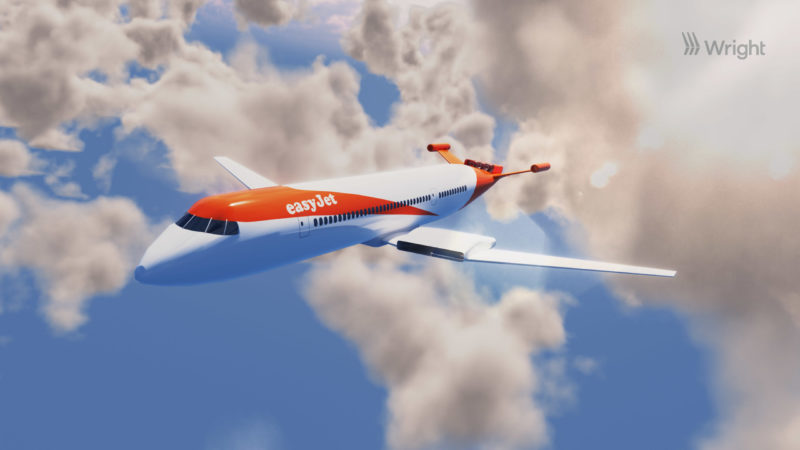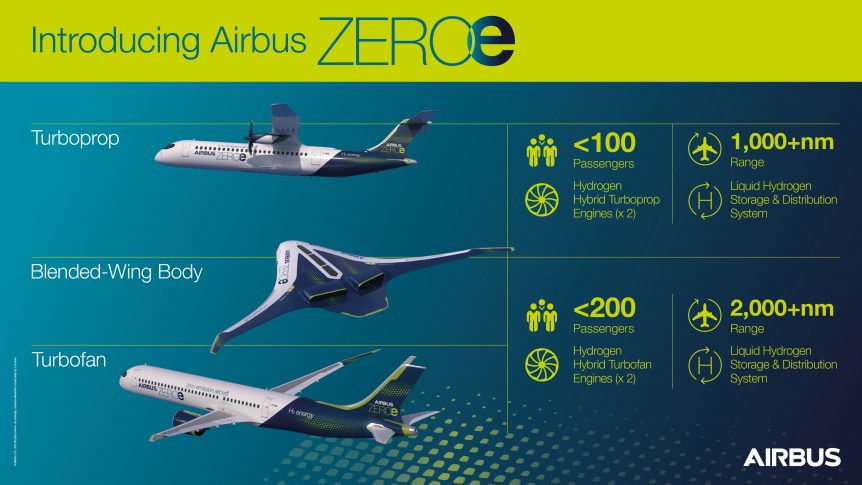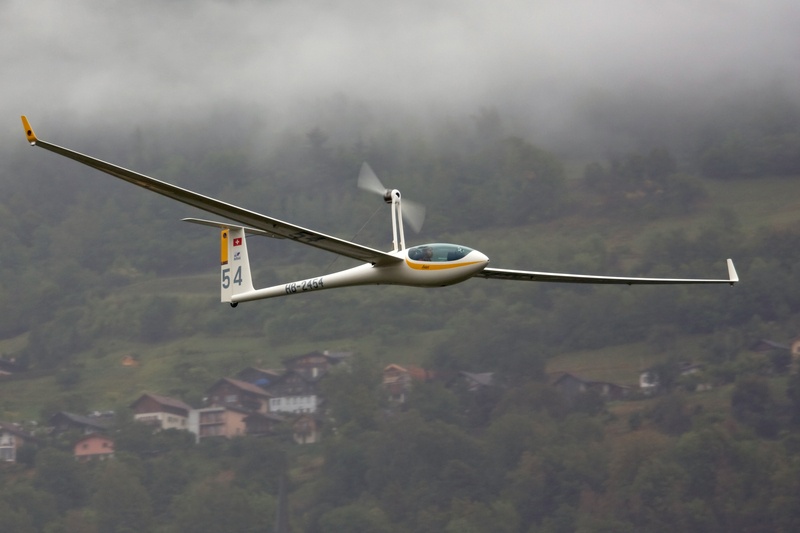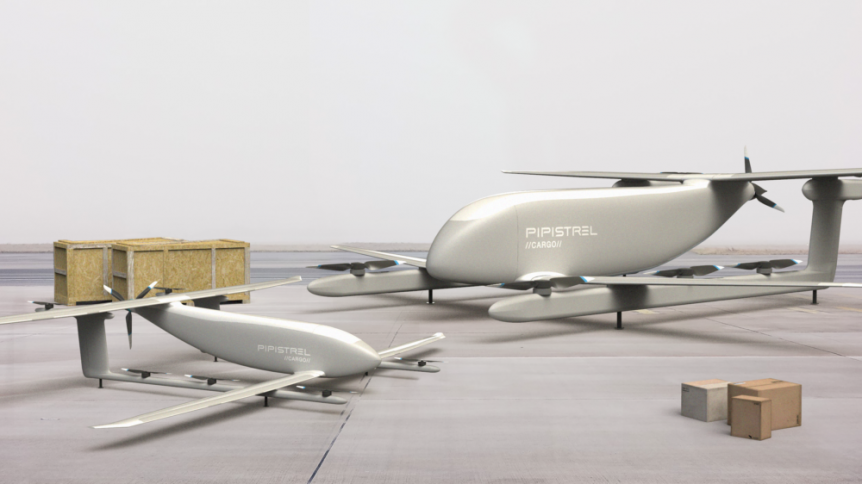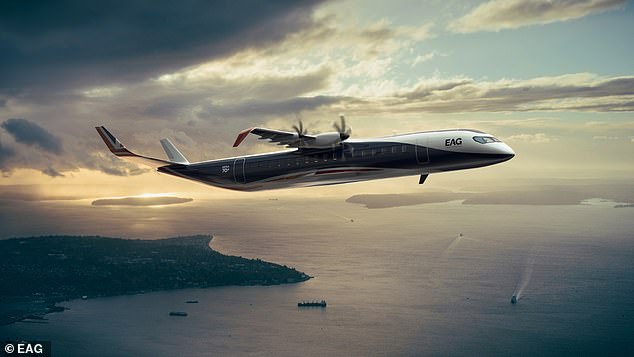One Size Does Not Fit All DLR (Deutsches Zentrum für Luft- und Raumfahrt or German Aerospace Center) and the German Aerospace Industries Association (Bundesverband der Deutschen Luft- und Raumfahrtindustrie; BDLI) present future visions of electric aircraft. These range from a four-seat hydrogen-powered repurposed Pipistrel that nine years ago won the NASA Green Flight Challenge to large, multiple propeller, medium-range airliners. Their White Paper, “Zero Emission Aviation – Emissionsfreies Fliegen” (unfortunately available only in German) promotes the promise of “energy transition in air transport, with the goal of zero emissions,” and claims this is “possible by mid-century but requires a considerable increase in innovation.” Rolf Henke, the member of the DLR Executive Board responsible for aeronautics research and technology, explains, “The time has come to start a new chapter in aviation. Our white paper shows the path to emission-free flying for the ‘Green Deal’ in aviation, which will lead to new technologies, attractive high-tech jobs, fascinating products and the promotion of …
Ampaire’s Second Electric Eel Sets Record
There are now two Ampaire electric EELs* flying, courtesy of Ampaire Aviation. The second test vehicle recently set a world record, staying in the air for two hours and 32 minutes, covering 341 miles at an average speed of “around 135 mph.” A six-seat Cessna 337 “Skymaster,” the “push-pull” twin has been modified by Ampaire “with an electric motor in the nose and traditional [internal] combustion engine in the rear. The paired powerplants act as a parallel hybrid, both electric and ICE units providing thrust simultaneously. Ampaire flew an electric-and-gas-powered Cessna 337 this year. With assistance from Ikhana, a modification and conversion specialist, Ampaire replaced the 337’s rear engine (which drives a pusher prop) with an electric propulsion system, leaving the forward engine in place. It is now swapping the configuration around – putting the engine in the back and moving the electric system forward, with batteries removed from the cabin and installed in a pod under the aircraft. Ampaire’s …
Wright Electric, ARPA-E, and Life’s Report Card
If, as the infamous cartoon in the New Yorker proclaimed, “Money is life’s report card,” Jeff Engler’s Wright Electric got a least a B+ for its current semester. While not as flush with cash as firms like Joby Aviation, eHang, or Volocopter, Wright received significant recognition for its initiative in designing high-efficiency electric motors with a high-frequency inverter and “an aggressive cooling strategy.” The $647,039 ARPA-E grant will further Wright’s work on the ARPA-E ASCEND Project. ASCEND stands for Aviation-class Synergistically Cooled Electric-motors with iNtegrated Drives, a sure-fire Scrabble winner and pretty tortuous acronym. Phase one of the project takes the team through the detailed design and subcomponent testing for the system. Phase two will see Wright build and demonstrate the system. Only a startup in 2017, Wright Electric has managed to partner with easyJet, a European budget airline, to develop a 186-seat electric aircraft called Wright 1. With others in startup mode flying six and ten-passenger aircraft and looking …
ZEROe on the Rise at Airbus
ZEROe Airbus, taking a new direction, announced that they are, “Exploring game-changing concept aircraft – known as ZEROe – powered by hydrogen, a disruptive zero-emission technology with the potential to reduce aircraft emissions by up to 50%.” Two seem to be evolutionary, employing a different fuel and powertrain within fairly conventional airframes. The third, a blended-wing body (BWB) structure, emulates Boeing’s and NASA’s BWB. All three, though, employ hydrogen to meet the planet’s need to reduce or eliminate carbon dioxide and other emissions. All three use hydrogen hybrid power systems. The International Civil Aviation Organization (ICAO) in a 2019 report looked at the different electric and hybrid systems available. The organization included a factor examined before in this blog. “The climate benefits of electric aviation may come not only from its reduced CO2 emissions, but also from the elimination of contrails – the long, thin clouds that form in the wake of jet engines2. Although no scientific consensus exists on …
E2 Glide – Electrifying Sailplane Competitions
Uwe Beger, competition director for a new form of sailplane contenst, wrote this in response to our entry on the Pipistrel Velis’ multiple records flying from Switzerland to the North Sea. “From August 29th to September 5th 2020 fifteen pilots from 6 different nations flew a cross country flying contest (E2 Glide), where the usage of electric engines (Front Electric Sustainers as well as Retractable Electric Engines) was allowed within some contingent of 2 up to 2.5 kWh per flight. Altogether the participants managed to fly a distance of nearly 10,000km (6,214 miles) with the use of 150 kWh of energy in sum.” That’s about 41.4 miles per kilowatt hour. “Not that bad compared to the world records of the Pipistrel Velis Electro ;-)” Granted that sailplanes are highly optimized vehicles that generate as little drag as anything flying – other than birds, perhaps. Each pilot in the E2 Glide gathering would have used an average of 10 kilowatt-hours of …
Pipistrel’s Nuuva’s – Electric Cargo Haulers
Like the TV commercial of the obviously wealthy couple requesting an architect design a kitchen around their choice of designer faucet, Pipistrel may have designed a cargo aircraft around the ubiquitous EUR-pallet. Its extraordinary Nuuva V300 can hold three of these 1,200 mm × 800 mm × 144 mm (47.2 in × 31.5 in × 5.7 in) platforms laden with items destined for distant places. The common dimensions enable planning a load (also considering total weight) that can be inserted into the Nuuva with a standard forklift. The cargo hold can manage up to 460 kilograms (1,000 pounds) within three cubic meters (106 cubic feet) of space, a little more than an Escalade. Electricity to Lift, Gasoline to Push It takes a big vehicle with loads of power to hoist this kind of cargo. Pipistrel sticks with proven systems for vertical and horizontal flight. “The Nuuva V300 takes-off and lands using eight independent battery-powered Pipistrel E-811 electric motors, already Type Certified. This revolutionary zero-emission powertrain is entirely liquid-cooled, including the …
DOE Promotes Carbon Neutrality Aeronautically
Both GreenCarCongress.com and CleanTechnica share information about the Department of Energy’s funding of 17 projects in two Advanced Research Projects Agency – Energy (ARPA-E) categories. Prepare for the inevitable rush of acronyms. All the projects seem to be reserved for applications on single-aisle short- and intermediate-range airliners, with emphasis on economy of operation, carbon neutrality and lowest possible emissions. ASCEND Powertrain related, ASCEND (Aviation-class Synergistically Cooled Electric-motors with iNtegrated Drives) will fund nine projects with $14.5 in Phase 1 money. Funds will help recipients, “Work to develop innovative, lightweight, and ultra-efficient all-electric powertrain with advanced thermal management systems that help enable efficient net-zero carbon emissions for single-aisle passenger commercial aircraft.” Raytheon Technologies Research Center has three projects in two ARPA-E categories, including their own Ultra-Light, inTegrated, Reliable, Aviation-class, Co-Optimized Motor & Power converter with Advanced Cooling Technology (ULTRA-COMPACT) for which they received $2,330,13. Their system will incorporate advanced materials and techniques in permanent magnets, drive topology, thermal management, and composite gearboxes. Marquette …
Electrifly-In: A Big Show in a Small Space
For those of us who find trudging over miles of airfield, such as Oshkosh’s AirVenture, or even local fly-ins spread along a runway tiring, Grenchen, Switzerland’s Electrifly-In may be welcome relief. The event, previously called the Smartflyer Challenge, is planned for September 12 and 13 and should draw electric aircraft from all over Europe. Grenchen, a town of just over 2,000, has an airport with a single runway of only 865 meters (2,838 feet), enough to enable a Cessna Citation CJ3 to land (and presumably depart). The runway will host this year’s newly re-named Electrifly-In, devoted to promoting electric aviation. All the activities will be held in a small, easily-accessible area. All Electric Aircraft – All Day A baker’s dozen aircraft have been promised for the event, ranging from ultralight motorgliders to more advanced sailplanes with front electric sustainer motors, to four-seat hybrid tourers, two-seat trainers and even an e-race airplane. AlpinAirPlanes GmbH, will bring their Pipistrel Velis E. Martin …
Regenerative Gas Turbines for Hybrid Aircraft
Beth Stanton shared an email she received from Alex Kovnat, EAA #452346, telling of Turbotech S. A. S., “A startup company” making very efficient gas turbines. Turbotech “has patented a regenerative, high-temperature heat exchanger that increases the efficiency of low power turbines by a factor of 2–3. They achieved this by recycling what would normally be waste heat in the exhaust gases to preheat the air entering the combustor, resulting in less fuel required to generate the same amount of power. Turbotech views the turbogenerator as the ‘missing link”’ that will enable the future of hybrid-electric aeronautical propulsion.” This regenerative ability reduces the amount of fossil fuel required to make things work – a valuable criterion while we await better batteries and cheaper fuel cells. The French company makes both a small turboprop engine, looking very much like “A downsized version of the AGT-1500 regenerative gas turbine that has served since the 1980’s as the power plant for the Army’s …
Electric Aviation Group Goes Big
Emulating bird flight has been a big part of man’s desire to fly through the years. The latest in ornithological look-alikes comes from the Electric Aviation Group in the United Kingdom. Their creation seem to be an outgrowth of last year’s somewhat controversial Bird of Prey concept displayed by Airbus at several prominent airshows. Designed to have a “certain ‘Wow’ factor,” the model took its cues from hawks and eagles, including a high-arched wing blended into the upper fuselage. It featured wingtips much like a bird’s, with primary feathers ostensible capable of morphing to control banking and even adverse yaw in a turn. Even its patriotic tail feathers were indeed feather-like and added to the avian quality of the aircraft. Sailplane designers in the 1930’s tried similar imitation, with craft like the German Fafnir reaching an arch-winged perfection. Its flight, at least in this video, would be a model of grace and smooth, flowing motion – a bit dreamlike. Hybrid …


